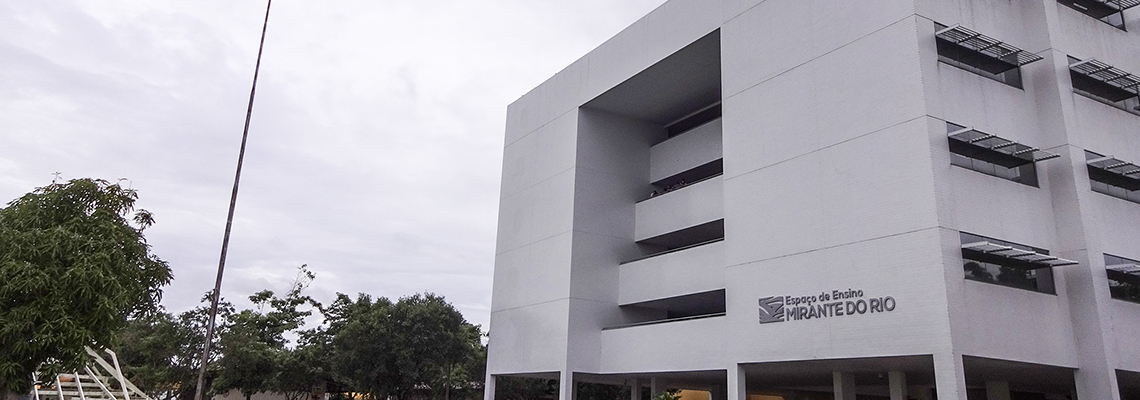Defesa de Tese
Título: EXPOSIÇÃO MATERNA AO METILMERCÚRIO E REPERCUSSÕES NAS GLÂNDULAS SALIVARES DA PROLE: um estudo bibliométrico e pré-clínico
Autora: PRISCILA CUNHA NASCIMENTO
Resumo
O metilmercúrio (MeHg) é um dos principais poluentes globais, especialmente no ecossistema amazônico. A vulnerabilidade do feto e do recém-nascido às mudanças induzidas por MeHg é amplamente relatada, tornando relevante a investigação de uma matriz de amostra alternativa para monitoramento biológico humano nesta fase da vida. Este estudo teve como objetivo caracterizar os aspectos histomoleculares induzidos pela exposição maternal ao MeHg ambiental-experimental nas glândulas salivares da prole de ratos após a exposição pré e pós-natal. Para isso, realizou-se estudo experimental com ratas Wistar prenhes expostas oralmente ao MeHg (40 μg / kg de peso corporal /dia), ou apenas veículo (grupo controle), desde o período gestacional até o final da lactação, para finalidade de análises proteômicas e histopatológicas. Para as análises experimentais, as glândulas salivares (GS) foram coletadas da prole a fim de avaliar os possíveis níveis de mercúrio total (Hg) e principais achados histológicos, a partir de avaliações histopatológicas e imuno-histoquímicas (imunomarcação de CK19 e α-AML); e possíveis repercussões moleculares por meio da análise do perfil proteômico, avaliado por espectrometria de massa. Paralelamente, realizou-se estudo bibliométrico para sintetizar quanti-qualitativamente a literatura mais citada acerca da exposição materna ao MeHg e possíveis repercussões na prole a fim de subsidiar o referencial teórico desta temática. Para isso, foi realizada uma pesquisa bibliográfica na base de dados eletrônica Web of Science ‘All Databases’, sem qualquer restrição de idioma ou ano de publicação. Posteriormente, os 100 primeiros artigos mais citados foram avaliados para extração de dados para análises estatísticas descritivas e de correlação, assim como para a elaboração da representação gráfica dos mapas bibliométricos. Com base no estudo pré-clínico, os resultados evidenciaram que os níveis de Hg nas GS da prole intoxicada foram associados com atrofia acinar e aumento da matriz intercelular entre os ácinos, além de danos na arquitetura do epitélio e células mioepiteliais, destacada por uma diminuição na área de imunomarcação. Além disso, evidenciou-se que o MeHg foi capaz de alterar significativamente o perfil proteômico das GS, principalmente proteínas relacionadas ao citoesqueleto, morfogênese tecidual e resposta a estímulo e estresse. Baseando-se nas análises bibliométricas, foi evidenciado que a exposição materna ao MeHg e possíveis consequências à saúde da prole possui clássicos de citação na bibliografia internacional; e, apesar de ser uma questão de saúde mundial, o Brasil obteve baixa representatividade, sendo os países anglo-saxões líderes com maior quantidade e densidade de citações na lista dos 100 artigos mais citados sobre a temática, especificamente com publicações do tipo revisão não-sistemática publicadas na primeira década dos anos 2000. Conclui-se que os achados inéditos aqui encontrados indicam que a exposição ao MeHg via transferência mãe-descendentes é capaz de modular significativamente a expressão de proteínas e induzir alterações no perfil proteômico associadas a achados histopatológicos nas glândulas salivares em desenvolvimento. Além disso, os resultados direcionam futuras investigações na toxicologia humana, uma vez que o fluído das GS pode auxiliar no desenvolvimento de uma alternativa mais acessível para o biomonitoramento da exposição ao MeHg, principalmente em indivíduos mais vulneráveis aos danos.
Resumo em Inglês
Methylmercury (MeHg) is one of the main global pollutants. The vulnerability of fetus and newborn to MeHg-induced changes is extensively reported, making relevant investigation possible for alternative sample matrix for human biological monitoring at this stage of life. This study aimed to characterize the histomolecular aspects induced by maternal exposure to environmental experimental MeHg in the salivary glands of the offspring of rats after prenatal and postnatal exposure. For this, was performed the experimental study with pregnant Wistar rats exposed orally to MeHg (40 μg / kg body weight/day), or only vehicle (control group), from the gestational period to the end of the lactation period, to perform transcriptomics, proteomics and histopathologic analysis. For the experimental study, the salivary glands (SG) of the offspring were dissected to analyze possible mercury levels (Hg) and histological findings, by histopathological and immunohistochemical assessments (immunostaining of CK19 and α-AML); and possible molecular repercussions through the analysis of the proteomic profile analyzed by mass spectrometry. Parallelly, was carried out a bibliometric study to synthesize quanti-qualitatively the most cited literature on maternal exposure to MeHg and possible repercussions on offspring. For this, a bibliographic search was carried out in the electronic database Web of Science ‘All Databases’, without the restriction of language or year of publication. Subsequently, the first 100 most-cited records were evaluated for data extraction for descriptive and correlation statistical analysis, as well as for the elaboration of the graphic representation of bibliometric maps. Based on the preclinical study, the results here indicate that the Hg levels in the GS of the intoxicated offspring were associated with acinar atrophy and an increase in the intercellular matrix between the acini, in addition to the damage to the architecture of the epithelium and myoepithelial cells, evidenced by a decrease in the immunostaining area. Besides, it was shown that MeHg is capable of significantly altering the proteomic profile of SG, especially proteins related to the cytoskeleton, tissue morphogenesis, and response to stimulus and stress. Based on bibliometric analyzes, it was shown that maternal exposure to MeHg and possible consequences for the health of offspring has citation classic in the international bibliography; and, despite being a global health issue, Brazil obtained low representativeness, being the leading Anglo-Saxon countries with the highest quantity and density of citations in the list of the 100 most cited articles on the theme, specifically with publications of the non-review type. systematically published in the first decade of the 2000s. In conclusion, for the first time in the literature, the findings here indicate that the exposure to MeHg via mother-offspring transfer was able to significantly modulate the protein expression and induce changes in the proteomic profile associated with histopathologic changes of salivary glands in development. Besides, the results direct future investigations in human toxicology, since the fluid of the SG can assist in the development of an accessible alternative for the biomonitoring of MeHg exposure, especially in individuals more vulnerable to damage.
Banca examinadora
Presidente: RAFAEL RODRIGUES LIMA - UFPA
Interno: RENATA DUARTE DE SOUZA RODRIGUES - UFPA
Externo ao Programa: JOSE LUIZ FERNANDES VIEIRA - UFPA
Externo ao Programa: MARIA IRACILDA DA CUNHA SAMPAIO- UFPA
Externo à Instituição: MANOELA DOMINGUES MARTINS - UFRGS
Local: Plataforma Google Meet
Data: 28/04/2021
Hora: 14:30







